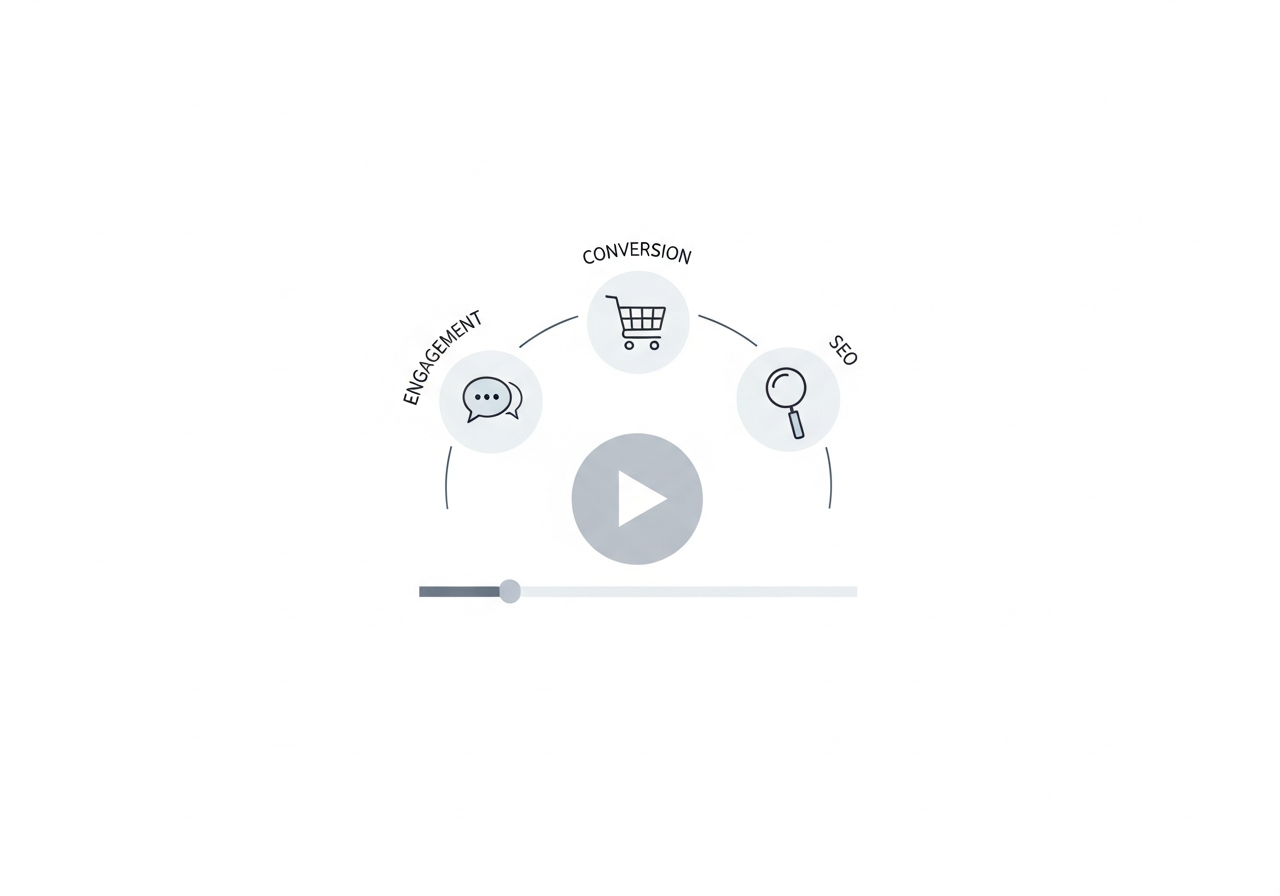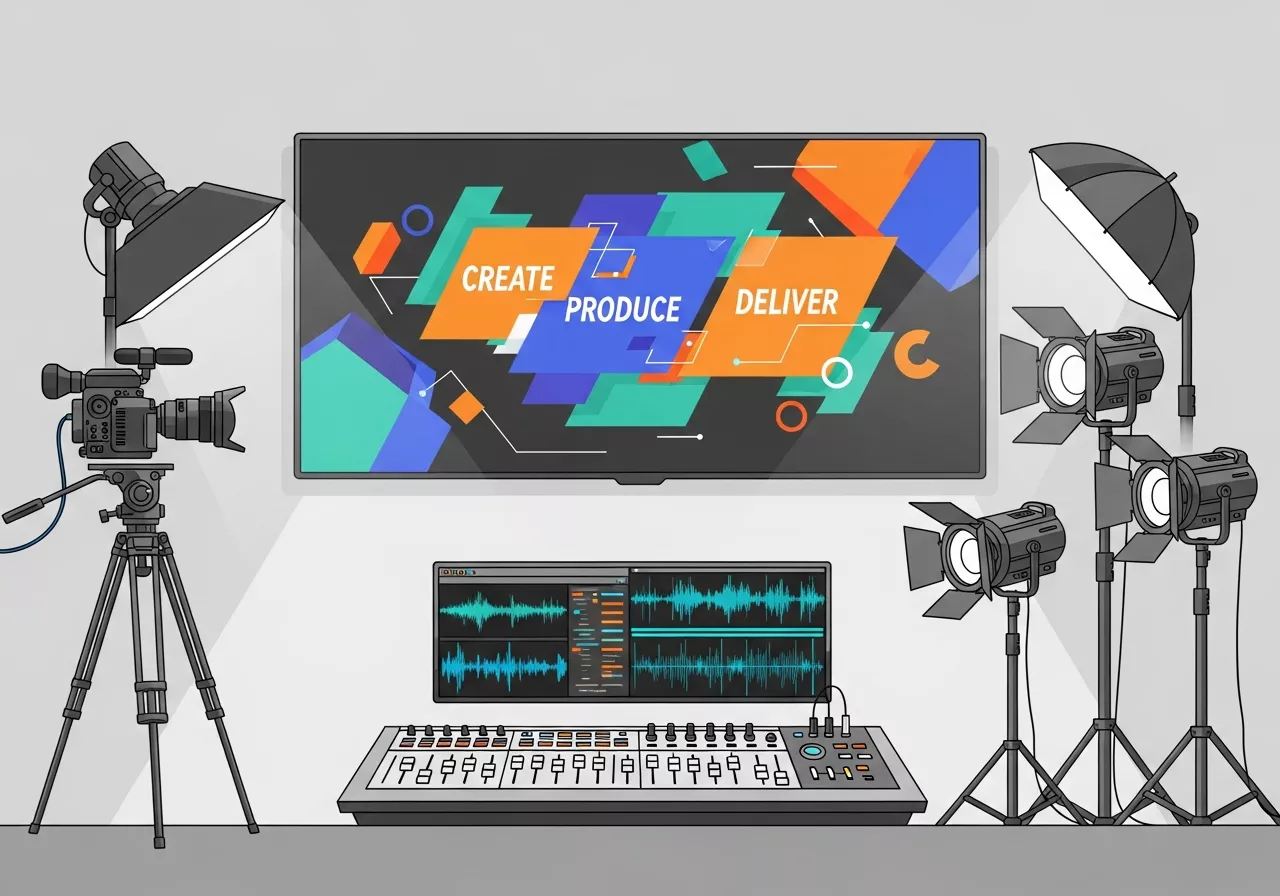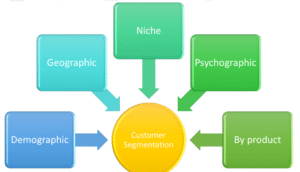Video Advertising: The Complete Guide to Online Video Ads

This guide explains video advertising, covering types, platforms, production techniques, budgeting, compliance, and campaign optimization. It provides strategies to engage audiences, boost conversions, measure ROI, avoid common mistakes, and create high-performing, mobile-friendly, and legally compliant video ads.
Video content has exploded across digital platforms, transforming how businesses connect with their audiences. From social media feeds to streaming platforms, online video ads capture attention like no other medium, driving engagement rates that static content simply can’t match.
This comprehensive guide will walk you through everything you need to know about video advertising—from understanding its core benefits to creating campaigns that deliver measurable results. Whether you’re a marketing professional looking to expand your digital toolkit or a business owner exploring new ways to reach customers, you’ll discover practical strategies to harness the power of video marketing.
Video advertising isn’t just about creating moving images; it’s about crafting compelling narratives that resonate with your target audience while driving specific business outcomes. By the end of this post, you’ll have the knowledge and tools to launch your own successful video advertising campaigns.
What is Video Advertising?
Video advertising refers to promotional content delivered through moving images and audio across digital platforms. Unlike traditional television commercials, online video ads can be precisely targeted, tracked, and optimized based on real-time performance data.
These advertisements appear in various formats and locations: before, during, or after video content on platforms like YouTube; within social media feeds on Facebook, Instagram, and TikTok; on websites as banner ads or pop-ups; and through connected TV and streaming services.
The versatility of video advertising allows businesses to tell complete stories, demonstrate products in action, and create emotional connections with viewers. This medium combines visual storytelling with strategic placement to maximize impact and return on investment.
Why Video Advertising Matters for Your Business

Higher Engagement Rates
Video content consistently outperforms other digital marketing formats. The combination of visual and auditory elements captures attention more effectively than static images or text alone. Viewers are more likely to watch, share, and remember video content, leading to increased brand awareness and recall.
Improved Conversion Rates
Video advertising excels at moving prospects through the sales funnel. Product demonstrations, customer testimonials, and explainer videos help potential customers understand value propositions quickly and clearly. This enhanced understanding often translates directly into higher conversion rates across industries.
Better SEO Performance
Search engines favor video content, often ranking pages with video higher than those without. Embedding video ads on your website can improve your search engine rankings while providing valuable content to visitors. Video content also increases time spent on your site, another positive ranking factor.
Enhanced Targeting Capabilities
Digital video platforms offer sophisticated targeting options based on demographics, interests, behaviors, and viewing habits. This precision ensures your video advertising budget reaches the most relevant audiences, maximizing your return on investment.
Types of Online Video Ads

Pre-Roll and Post-Roll Ads
These video advertisements play before or after the main video content on platforms like YouTube and streaming services. Pre-roll ads typically run 15-30 seconds and must capture attention immediately, while post-roll ads can be longer since viewers have already engaged with content.
In-Stream Video Ads
In-stream ads appear during video content, similar to traditional TV commercials. They can be skippable or non-skippable, with each format serving different campaign objectives. Non-skippable ads guarantee full message delivery, while skippable ads often provide better user experience.
Social Media Video Ads
Native video advertisements on social platforms blend seamlessly with organic content. Facebook, Instagram, LinkedIn, and TikTok each offer unique video advertising formats optimized for their specific user behaviors and expectations.
Display Video Ads
These advertisements appear as banner ads on websites, often featuring video content within standard display ad dimensions. They combine the visual appeal of video with the widespread placement opportunities of display advertising.
Connected TV and OTT Ads
Over-the-top and connected TV advertising delivers video content through streaming services and smart TVs. This format combines the impact of television advertising with the targeting precision of digital marketing.
Creating Effective Video Advertising Campaigns
Define Clear Objectives
Successful video advertising campaigns begin with specific, measurable goals. Are you looking to increase brand awareness, drive website traffic, generate leads, or boost sales? Your objective will influence every aspect of your campaign, from creative approach to platform selection.
Know Your Audience
Understanding your target audience’s preferences, behaviors, and pain points is crucial for creating compelling video content. Research where your audience consumes video content, what types of videos they engage with, and what messaging resonates with their needs.
A foundational step in this process is Creating Buyer Personas for Better Outbound Targeting. These detailed profiles help clarify who your ideal customers are, allowing you to tailor your video messaging, tone, and placement strategies accordingly. The more accurately you define your audience, the more effective your video advertising efforts will be in driving meaningful engagement and conversions.
Craft Compelling Scripts
Great video advertising starts with strong scripts that communicate your message clearly and persuasively. Focus on benefits rather than features, include clear calls-to-action, and structure your content to maintain viewer interest throughout the ad duration.
Optimize for Mobile Viewing
The majority of video content is consumed on mobile devices. Ensure your video advertising creative is optimized for vertical and square formats, uses large, readable text, and communicates key messages even without sound, as many mobile users watch videos with audio off.
Test Different Creative Approaches
A/B testing different video variations helps identify what resonates best with your audience. Test different opening hooks, calls-to-action, video lengths, and creative styles to optimize performance continuously.
Advanced Video Production Techniques for High-Performing Ads

High-quality production can significantly elevate the effectiveness of your video advertising campaigns. While basic videos can still perform well with strong storytelling, advanced production techniques help your content stand out in crowded feeds and competitive markets. Understanding which methods deliver the highest impact ensures your investment directly supports business goals.
1. Use of Dynamic Visual Elements
Dynamic visuals—such as motion graphics, animation overlays, and fast-paced transitions—help maintain viewer interest and reinforce key messages. These techniques are especially effective for product explainers, app demos, and service walkthroughs.
- Highlight product features through animation
- Add motion-based callouts to emphasize benefits
- Use kinetic typography for text-only or low-dialogue ads
2. Sound Design and Audio Branding
Sound is a powerful emotional trigger. Investing in thoughtful audio—voiceovers, background music, branded sound cues—creates a polished and memorable viewing experience.
- Use high-quality voiceovers
- Incorporate branded sound signatures
- Optimize audio levels for mobile playback
3. Professional Lighting and Cinematography
Great lighting can instantly increase the perceived professionalism of your ad. Cinematographic techniques such as depth of field, smooth camera movement, and scene composition elevate storytelling.
Video Production Techniques Comparison
| Technique Type | Impact on Viewer Engagement | Cost Level | Best For |
|---|---|---|---|
| Motion Graphics | High | Medium | SaaS, eCommerce, apps |
| Live-Action + Pro Lighting | Very High | High | Brand storytelling, testimonials |
| Animation | Medium–High | Medium–High | Explainers, educational ads |
| User-Generated Style | Medium | Low | Authenticity-focused campaigns |
Mastering these techniques allows you to create video ads that not only look stunning but also convert more effectively.
Video Advertising Platforms and Placement Options
YouTube Advertising
As the world’s second-largest search engine, YouTube offers extensive reach and sophisticated targeting options. The platform supports various ad formats and provides detailed analytics to measure campaign performance and optimize results.
Facebook and Instagram Video Ads
Meta’s platforms excel at reaching specific demographic groups with native video content. The seamless integration with organic content and advanced targeting capabilities make these platforms excellent for both awareness and conversion campaigns.
LinkedIn Video Advertising
For B2B marketing, LinkedIn provides access to professional audiences based on job titles, industries, and company size. Video content performs particularly well for thought leadership and professional service marketing.
TikTok Video Ads
The rapidly growing platform offers unique opportunities to reach younger demographics through creative, entertaining video content. TikTok’s algorithm favors engaging content, making it possible for well-crafted ads to achieve organic reach.
Budgeting and Cost Planning for Video Advertising
A successful video campaign requires thoughtful budgeting—not just for ad spend, but for production, distribution, and optimization. Understanding how to properly allocate funds ensures your campaigns remain cost-effective and scalable.
1. Production Budget Allocation
Your production budget covers filming, editing, scripting, actors, graphics, and sound. Depending on the complexity of your ad, this cost varies widely.
- Low-budget ads: $200–$1,000 (DIY, UGC style)
- Mid-tier ads: $1,000–$10,000 (professional videographer)
- High-end ads: $10,000+ (studio, animation, multiple location shoots)
2. Ad Spend Allocation
Your advertising budget determines how widely your content is distributed. Platforms like YouTube, Facebook, and TikTok allow flexible budgeting starting at a few dollars per day.
Key considerations:
- Targeting precision
- Audience size
- Bidding strategy (CPM, CPC, CPA)
- Seasonality
3. Ongoing Optimization Costs
Optimization is essential for consistent performance, especially in competitive industries.
Costs may include:
- Creative refreshes
- A/B testing tools
- Audience retargeting
- Analytics subscriptions
Sample Budget Breakdown for a 3-Month Campaign
| Cost Category | % Allocation | Example Amount |
|---|---|---|
| Production | 30% | $6,000 |
| Ad Spend | 50% | $10,000 |
| Optimization | 15% | $3,000 |
| Analytics/Tools | 5% | $1,000 |
By strategically planning your budget, you ensure your video ads remain sustainable, scalable, and consistently high-performing.
Digital Marketing Ideas for Construction Companies
Construction companies can leverage video advertising in several effective ways. Project time-lapse videos showcase capabilities and build trust with potential clients. Before-and-after transformation videos demonstrate expertise and results clearly.
Safety training videos and equipment demonstrations position companies as industry leaders while providing valuable content to existing customers. Client testimonial videos build credibility and help overcome common concerns about reliability and quality.
Virtual property tours and 3D walkthroughs allow construction companies to showcase completed projects and help clients visualize potential renovations or new builds. These immersive experiences can significantly impact purchasing decisions in the construction and real estate industries.
If you’re looking to expand your strategy even further, explore these 10 Effective Digital Marketing Ideas for Construction Companies—video advertising is just one piece of a broader toolkit that can help you build brand authority, drive leads, and increase project inquiries online.
Measuring Video Advertising Success

Key Performance Indicators
Track metrics that align with your campaign objectives. View rates, click-through rates, and conversion rates provide insights into how well your video advertising resonates with audiences. Cost per acquisition and return on ad spend help evaluate financial performance.
Analytics and Optimization
Most video advertising platforms provide comprehensive analytics dashboards. Monitor performance regularly and make data-driven adjustments to improve results. Look for patterns in audience behavior and creative performance to inform future campaigns.
Attribution and ROI Measurement
Implement proper tracking to understand how video advertising contributes to overall business goals. Use UTM parameters, pixel tracking, and conversion tracking to attribute sales and leads accurately to your video advertising efforts.
Legal, Compliance & Accessibility Considerations in Video Advertising
As video becomes a central component of digital marketing, businesses must ensure their content adheres to legal and accessibility requirements. Compliance not only protects your brand but also expands your reach by making content more inclusive.
1. Ad Platform Policies & Legal Requirements
Every major platform—YouTube, Meta, TikTok, LinkedIn—has strict guidelines around:
- Prohibited content
- Misleading claims
- Age-appropriate targeting
- Copyright use of music, footage, and trademarks
Failure to comply can result in ad rejection, account suspension, or even legal action.
2. Accessibility Best Practices
Making your video content accessible improves user experience and ensures compliance with regional accessibility laws (e.g., ADA in the U.S.).
Best practices include:
- Closed captions (automatic or custom)
- Clear on-screen text
- High-contrast visuals
- Descriptive audio or readable subtitles
- Avoiding flashing elements
3. Data Privacy & Consent
If your ad uses customer data, testimonials, or images of real people, ensure proper consent is obtained. For tracking and retargeting:
- Display cookie consent banners
- Inform viewers about data usage
- Follow GDPR/CCPA guidelines depending on region
Accessibility Implementation Checklist
| Requirement | Description | Status |
|---|---|---|
| Captions | Add subtitles for all spoken audio | ⬜ |
| High Contrast Text | Ensure text is readable on any device | ⬜ |
| Screen Reader Support | Provide alt-text for thumbnail & metadata | ⬜ |
| Legal Disclosures | Include necessary disclaimers | ⬜ |
Addressing these elements ensures your video ads are inclusive, compliant, and aligned with industry best practices.
Common Video Advertising Mistakes to Avoid
Many businesses make the mistake of creating video ads that are too long for their placement and objective. Attention spans are short, especially for advertising content, so communicate your key message within the first few seconds.
Another common error is neglecting mobile optimization. Failing to consider how your video will appear and perform on smartphones can significantly limit campaign effectiveness.
Don’t overlook the importance of clear calls-to-action. Many otherwise effective video ads fail to drive results because they don’t tell viewers what to do next.
Getting Started with Your Video Advertising Strategy
Begin by auditing your existing marketing materials and identifying content that could be adapted for video format. Customer testimonials, product demonstrations, and company introductions often translate well to video advertising.
Start with a small budget test campaign on one platform to learn what works for your business before expanding to multiple channels. This approach allows you to refine your strategy and creative approach without significant financial risk.
Consider partnering with video production professionals if you lack in-house capabilities. Quality video content often requires specialized skills and equipment, but the investment typically pays dividends in campaign performance.
Focus on creating authentic, valuable content that serves your audience’s needs while advancing your business objectives. The most successful video advertising campaigns provide genuine value to viewers while building brand awareness and driving conversions.
FAQ: Everything You Need to Know About Video Advertising
1. What is video advertising?
Video advertising refers to promotional content delivered through video across digital platforms such as YouTube, social media, websites, and streaming services. It allows precise targeting, measurable results, and more engaging storytelling than static ads.
2. How long should a video ad be?
This depends on placement:
- YouTube pre-roll: 6–15 seconds
- Social media feed ads: 6–20 seconds
- Connected TV: 15–30 seconds
- Explainers or product demos: 30–90 seconds
Shorter ads generally perform better, especially on mobile and social platforms.
3. How much does video advertising cost?
Costs vary based on production and ad spend:
- DIY/UGC-style ads: $100–$800
- Professional ads: $1,000–$10,000+
- Ad spend: $5–$500 daily (platform-dependent)
Your budget should align with campaign goals and audience size.
4. Do video ads work better than image ads?
Yes. Video ads typically deliver:
- Higher engagement
- Better message retention
- Higher click-through rates
- Stronger emotional connection
They outperform static content on nearly every major platform.
5. Which platforms are best for video advertising?
Top platforms include:
- YouTube: Broad reach and strong targeting
- Facebook/Instagram: Great for demographic targeting
- TikTok: High engagement for creative, short-form content
- LinkedIn: Ideal for B2B audiences
- Connected TV (CTV): Premium placements with TV-like impact
The best platform depends on your audience and objectives.
6. Do I need professional equipment to make video ads?
Not necessarily. Many high-performing ads are filmed using smartphones. What matters most is:
- Clear message
- Good lighting
- Good audio
- Strong hook within the first 3 seconds
Professional production helps—but isn’t required.
7. How do I measure video advertising success?
Track key metrics such as:
- View-through rate (VTR)
- Watch time
- Click-through rate (CTR)
- Cost per view (CPV)
- Conversions and return on ad spend (ROAS)
Your KPIs should align with your campaign goals.
8. What mistakes should I avoid when creating video ads?
Common pitfalls include:
- Ads that are too long
- No clear call-to-action
- Not optimizing for mobile users
- Poor lighting or audio
- Targeting too broad of an audience
Avoiding these mistakes dramatically improves performance.
9. Do video ads need captions?
Yes—absolutely. Captions increase accessibility and engagement. Many users watch with the sound off, especially on mobile platforms.
10. How fast should my video hook the viewer?
You have 1–3 seconds to grab attention. Start with:
- A bold visual
- A compelling question
- A surprising fact
- Clear value proposition
Strong hooks significantly boost viewer retention.
Learn more: Creating Outbound Messaging That Cuts Through the Noise





